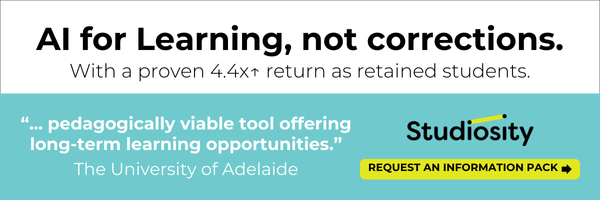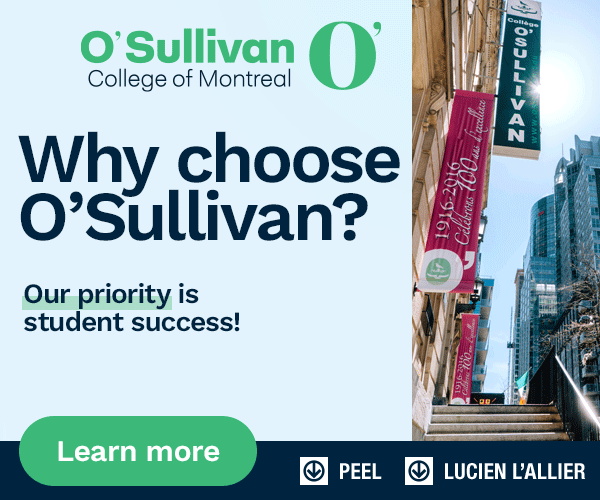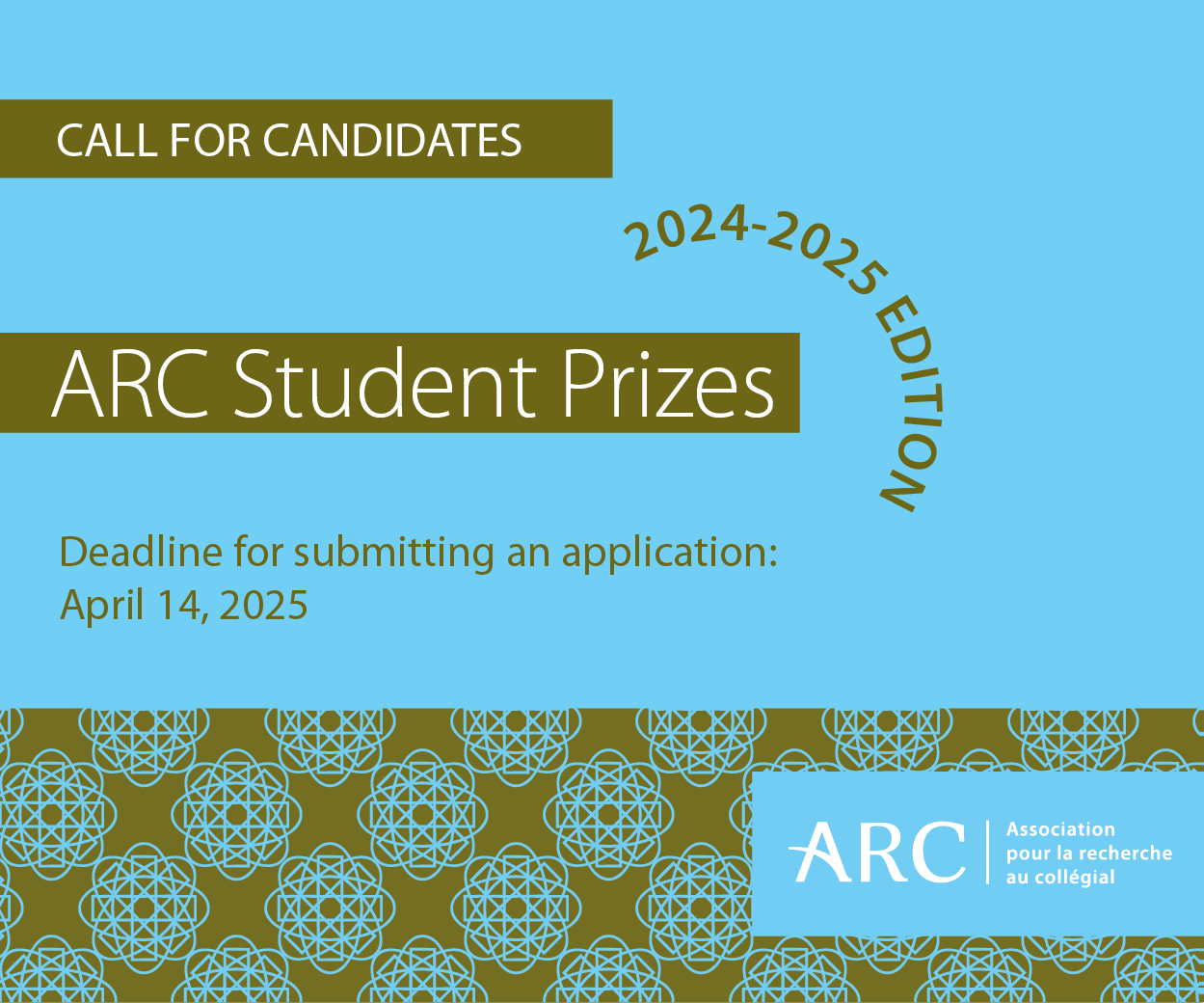At the University of Calgary, innovation isn't just a buzzword it's a way of life. Nestled within the bustling halls of the Faculty of Veterinary Medicine (UCVM) is an unsung hero who is transforming veterinary education one simulator at a time. Meet UCVM's in-house 'artiste in residence', Tony Stevens, Registered Veterinary Technologist (RVT) and Clinical Teaching Technician, a title well earned by his artistic craftsmanship in developing lifelike simulators that enhance the hands-on skills of future veterinarians.
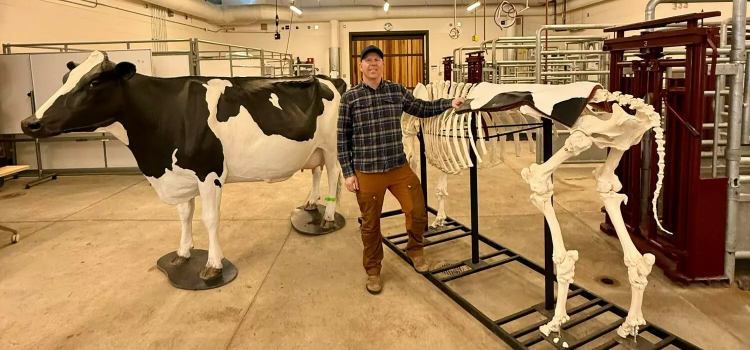
Tony Stevens with a piece of simulated cow skin draped over a skeleton. Photo Courtesy Tony Stevens
It all began in 2015 when a simple piece of skin from another vet school sparked a cascade of creativity for our resident simulator artisan. "Dr. Emma Read, our Clinical Skills Chair, brought me this piece, and it really propelled me down the path of refining and designing new simulators," Stevens recalls. Since then, he has been on a mission to craft simulators that are not only cost-effective but also tailored to the specific needs of UCVM's veterinary students.
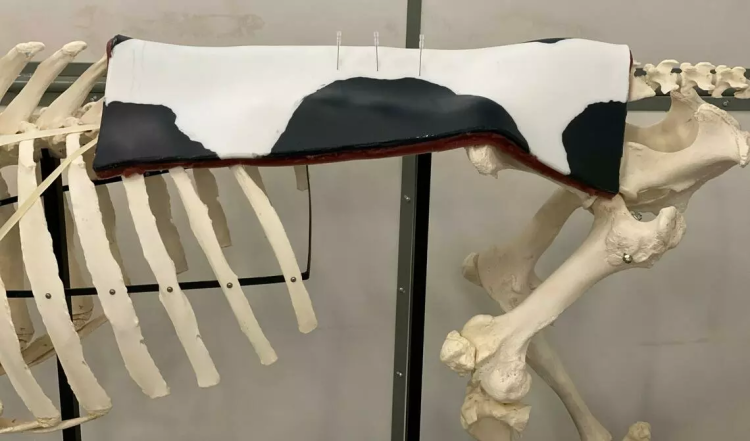
A multi-layer cow skin piece, draped over a cow skeleton for practice on a life like frame.
From thick simulated skin that mimics real tissue layers for practising sutures to thinner skins for hollow-organ (eg. bladder) simulations, his creations are nothing short of extraordinary, and always expanding. "During COVID, we had the first third-year class with over fifty students, so we needed to boost learning opportunities," says Stevens. "It was a good opportunity for me to make a bovine skin slab to drape over a skeleton to teach students how to perform a c-section on a cow." Most currently, he's refining the art of canine castration and trachea models.
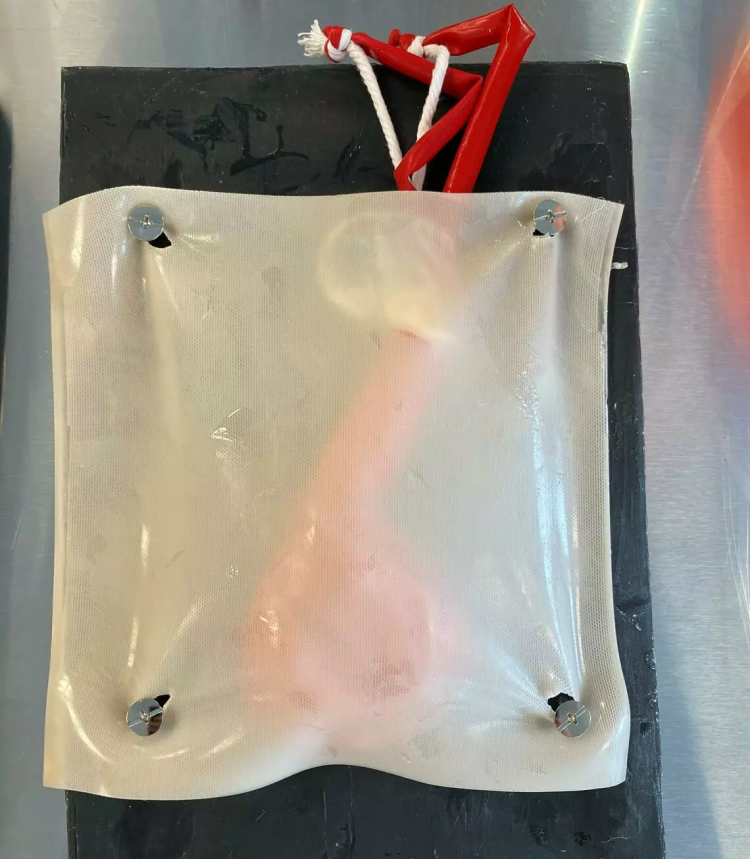
Simulator for dog neuters. A vital piece in the effort against pet overpopulation.
While the in-house creations cost roughly $35-40 for a piece of skin compared to the $100 price tag of commercial simulators, it's not only about saving money. For Stevens, it's about creating a "clean and calm environment" where students can focus solely on honing their skills, as well as "promoting vet-med through a different lens." Vet schools worldwide have started using simulators as preliminary teaching devices and have followed in the footsteps of UCVM in setting up dedicated simulator labs for students to access round the clock.
One would imagine that being a groundbreaking artist using a unique and specialized medium would be a full-time job. Not for Stevens. His workday, along with his team of fellow teaching technicians, is a whirlwind of activity, as is evident in his description of an average day.
"When I lead the Bovine Local Anesthesia lab, I will arrive by 7:30 a.m. I ensure all drugs are pulled up and ready to go for demos. Myself and another member of staff will bring the first set of five cows into the chutes. We brush all the snow off them, so it doesn't melt on them and make them cold when they go back out to -20, and offer grain as positive re-enforcement. We'll clip to remove hair from the tail and wash the area with disinfectant soap for an epidural demo. Faculty will arrive during this as well and help with anything else we need. While we are doing this, there will be another lead RVT and one of our TSA's [Technologist Support Assistant] getting cadavers out on tables for the small animal orthopedic lab, which is happening simultaneously. At 8:30a.m. clinical skills lab starts! I teach at a station, as well as faculty at other stations. We ensure that the cadaver portion of this lab also gets set up, thanks to our anatomy and teaching support assistants, while we're going back and forth. Morning lab ends, in this case at 11:30. We clean up all the poo from our fantastic cows, reset all the stations for students, go grab some food and then come back at 12:30 to start moving the next set of cows in for the 1:00p.m. lab. Rinse and repeat for the afternoon."
It's in between all of this activity that Stevens finds a moment to pour another layer of skin for a simulator, or provide a building tour, or treat some of the teaching animals. "Logistical planning is our middle name," he laughs.
And if that's not enough, think again. A self-proclaimed movie buff, our techno-artist has even dabbled in the world of film, working with Dr. Michelle Oakley on "Yukon Vet" and renting equipment to a Hallmark movie. "I was a stand-in tech for surgery on a simulated swan," he beams. "I even had my very own driver to the set!"
As UCalgary continues to champion entrepreneurial thinking and community involvement, it's visionaries like Stevens who embody the university's ethos of starting something remarkable. In his own words, "I feel like making simulators brings together a lot of my skills and interests into something that is useful and rewarding. I love this work". And what a process it is, a perfect blend of art, science, and a touch of cinematic flair.


